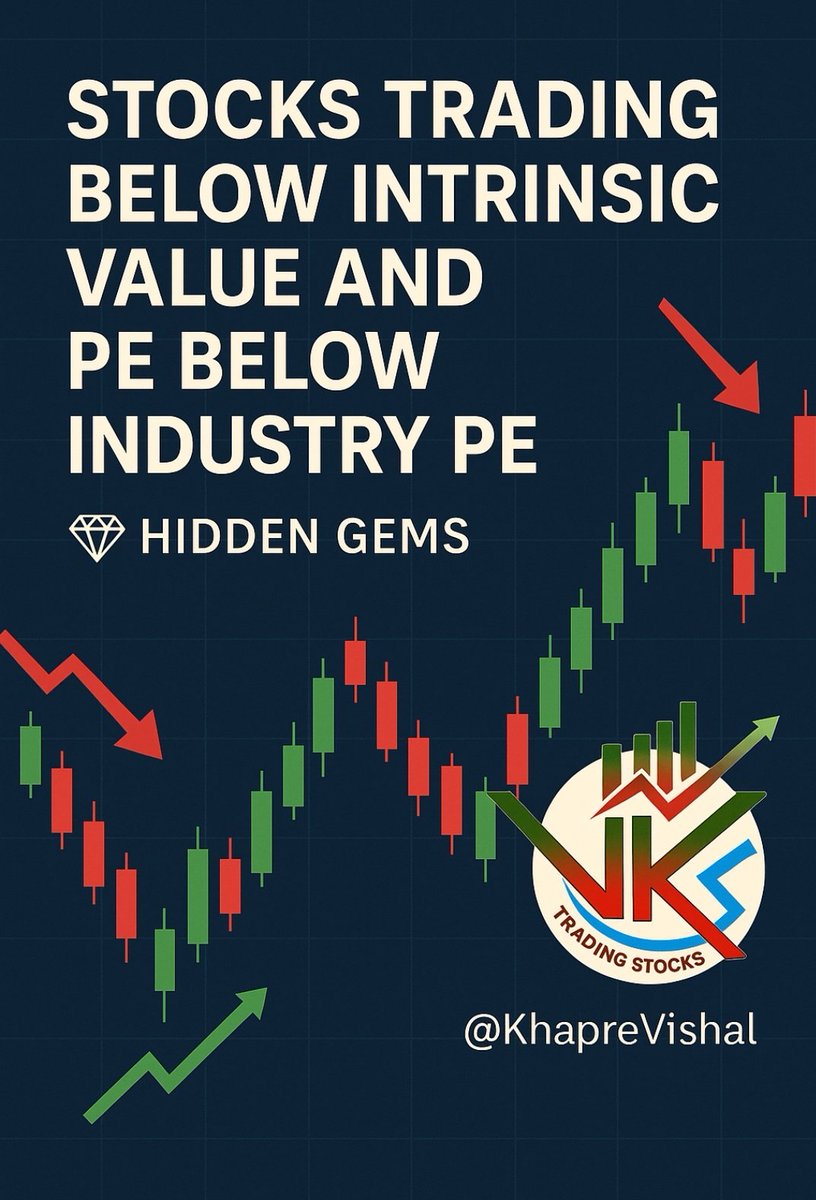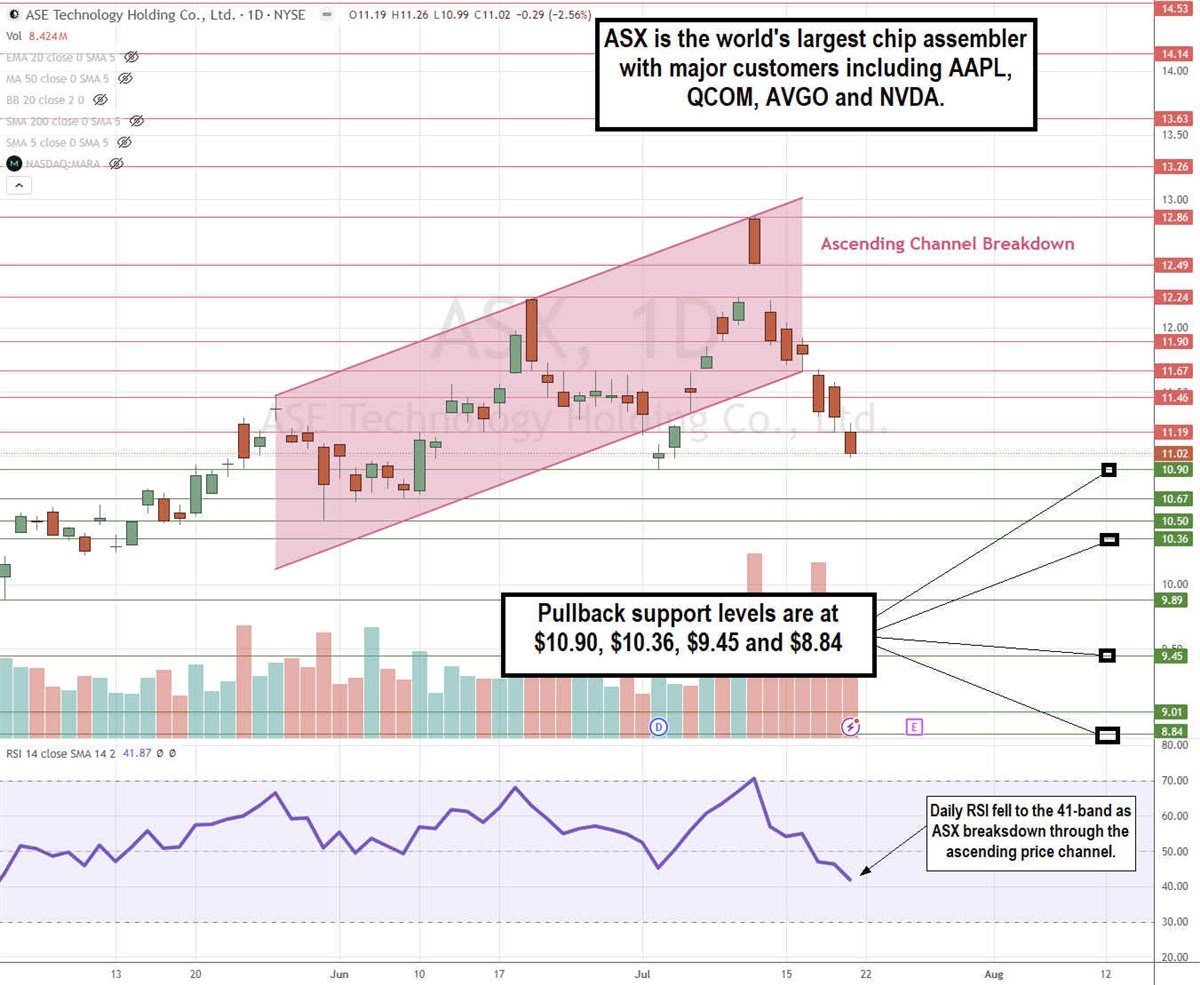Unearthing Industrial Gold: Finding Hidden Gem Stocks for Your Portfolio
The industrial sector might not always grab the headlines like flashy tech companies, but it’s the backbone of our economy, quietly powering everything from manufacturing to logistics, infrastructure, and even the move towards green energy. While the big names are well-known, smart investors know that true wealth often lies in uncovering “hidden gems” – those undervalued industrial stocks with immense growth potential that haven’t quite caught the market’s full attention. This isn’t about chasing fads; it’s about deep dives into companies that are innovating, adapting, and poised for significant gains, often overlooked by the broader market.
Why the Industrial Sector is Ripe for Hidden Gems
The industrial sector is vast and diverse, encompassing a wide array of sub-sectors. From heavy machinery to automation, aerospace and defense, construction, transportation, and environmental services, there’s a constant ebb and flow of innovation and demand. This dynamism creates opportunities for companies that are:

Undergoing transformation: Many traditional industrial companies are embracing digitalization, automation, and sustainable practices, reinventing themselves for the future. Those that successfully navigate this shift can unlock significant value.
The Power of Digital Transformation in Industrials
One of the most compelling narratives in the industrial sector right now is the widespread adoption of digital technologies. This isn’t just about efficiency; it’s about entirely new business models and revenue streams.
High-Tech Manufacturing and the “Software-Defined” Future

Imagine a world where industrial machinery isn’t just a collection of gears and circuits, but a smart, connected ecosystem constantly learning and improving. That’s the promise of high-tech manufacturing, where software increasingly dictates the performance and capabilities of hardware. Companies pushing the boundaries here are truly hidden gems.
Big players like Volvo Group and Daimler Truck are even joining forces to create standardized, software-defined vehicle platforms. This might sound a bit “techy” for industrials, but it’s a huge deal. By decoupling software from hardware, they’re cutting down on development costs, speeding up innovation, and opening the door to recurring revenue through software subscriptions. Think about it: a truck that gets better over time with over-the-air updates, just like your smartphone. Companies that are enabling or participating in this kind of shift, even if they’re smaller components suppliers or software developers for industrial applications, are worth a serious look.
Logistics Software: Smoothing Out the Supply Chain Bumps
The last few years have shown us just how fragile global supply chains can be. This has created an urgent need for smart, efficient logistics. Companies specializing in logistics software are becoming indispensable. They provide real-time data, optimize routes, predict disruptions, and ultimately help industrial firms save a ton of money and headaches.

Consider companies like Descartes Systems, which offers real-time supply chain analytics. Their solutions reduce friction, minimize congestion, and help businesses navigate volatile shipping rates. These aren’t just minor improvements; they’re essential tools for any industrial company looking to stay competitive. Investing in firms that provide these crucial digital tools is like investing in the picks and shovels of the modern industrial gold rush.
Reshoring and Nearshoring: Bringing Production Closer to Home
There’s a growing trend, especially in the US and Europe, to bring manufacturing operations closer to home or to neighboring countries. This “reshoring” or “nearshoring” movement is driven by a desire for greater supply chain resilience, reduced transportation costs, and often, government incentives.
This trend directly benefits industrial companies involved in constructing new factories, supplying advanced manufacturing equipment, or providing automation solutions. For instance, companies like Jabil, which are expanding their U.S. manufacturing footprint while simultaneously digitizing their supply chains, are perfectly positioned to capitalize on this shift. They’re reducing reliance on long, often unpredictable, transpacific routes and benefiting from the push for localized production.
The Green Energy Revolution and Its Industrial Underpinnings
The global push towards clean energy isn’t just about solar panels and wind turbines; it’s a massive industrial undertaking. From the specialized materials needed for batteries to the heavy machinery required for offshore wind farm construction, the green energy revolution is creating a tidal wave of demand for industrial goods and services.
European initiatives like the “Clean Industrial Deal” are pouring billions into low-carbon hydrogen projects, grid modernization, and affordable energy solutions. This directly benefits industrial companies that are:
Producing components for renewable energy infrastructure: Think about the specialized parts for wind turbines, or the equipment used in hydrogen production plants.
While some of the big names in renewables like Orsted or Vestas are well-known, there are many smaller, specialized industrial companies in their supply chains or providing critical services that are fantastic hidden gem opportunities. These companies might be manufacturing specialized cables, developing advanced control systems for wind farms, or providing maintenance services for renewable energy assets.
Identifying Potential Hidden Gems: What to Look For
So, how do you actually find these hidden gems amidst the vast industrial landscape? It takes a bit of digging, but here are some key characteristics and areas to focus on:
Strong Balance Sheets and Low Debt
A company might have exciting growth prospects, but if it’s drowning in debt, it’s a risky bet. Hidden gems often have solid financial foundations, with manageable debt levels and healthy cash flows. This allows them to weather economic storms and invest in future growth. Look for companies with low debt-to-equity ratios and a good current ratio, indicating strong short-term liquidity.
Niche Market Dominance and High Barriers to Entry
Companies that dominate a specific niche, especially one with high barriers to entry, tend to be more resilient and profitable. These barriers could be proprietary technology, specialized expertise, regulatory hurdles, or significant capital requirements. If a company has a unique product or service that’s difficult for competitors to replicate, that’s a strong indicator of a hidden gem.
Innovation and R&D Investment
Even in traditional industries, innovation is key. Companies that are consistently investing in research and development (R&D) to improve their products, processes, or create new solutions are more likely to be future leaders. This could involve developing new materials, improving automation technologies, or creating software solutions that streamline operations. Look for consistent R&D spending as a percentage of revenue.
Strong Management Teams with a Clear Vision
A great product or service is nothing without strong leadership. Look for companies with experienced management teams that have a clear vision for the future, a proven track record, and a commitment to shareholder value. Transparent communication and realistic growth projections are also good signs.
Customer Diversification and Long-Term Contracts
Reliance on a single customer or a handful of large contracts can be risky. Hidden gems often have a diversified customer base, reducing their exposure to any single client’s fortunes. Long-term contracts can also provide stability and predictable revenue streams, which is a major plus in a cyclical sector like industrials.
Favorable Valuation Metrics
This is where the “undervalued” part comes in. Even a great company isn’t a hidden gem if its stock price already reflects all its future potential. Look for companies with attractive valuation metrics compared to their peers and historical averages. This might include:
Low Price-to-Earnings (P/E) ratio: A lower P/E than the industry average could signal undervaluation.
Overlooked by Analysts and the Mainstream Media
The truly hidden gems often fly under the radar of major financial news outlets and Wall Street analysts. This means fewer eyes on the stock, which can keep the price depressed, creating an opportunity for those who do their homework. Small-cap and mid-cap industrial companies are often where these opportunities are found.
Risks and Considerations
Of course, investing in hidden gems, especially in a cyclical sector like industrials, isn’t without its risks.
Economic Sensitivity
Industrial companies are highly sensitive to economic cycles. A slowdown in global growth, rising interest rates, or geopolitical instability can impact demand for their products and services. Diversifying your portfolio across different industrial sub-sectors can help mitigate this risk.
Supply Chain Disruptions
Even with reshoring efforts, global supply chains remain complex. Disruptions due to natural disasters, geopolitical events, or pandemics can significantly impact production and profitability.
Commodity Price Volatility
Many industrial companies rely on commodities like steel, copper, or energy. Fluctuations in these prices can impact their cost of goods sold and profit margins.
Competition and Technological Change
The industrial landscape is constantly evolving. Companies that fail to innovate or adapt to new technologies can quickly lose their competitive edge.
Conclusion
The industrial sector, while sometimes overlooked, offers a treasure trove of potential “hidden gem” investment opportunities. By focusing on companies that are embracing digital transformation, benefiting from major macroeconomic shifts like reshoring and green energy, and exhibiting strong financial fundamentals, investors can unearth undervalued stocks with significant long-term growth potential. It requires diligence, a willingness to look beyond the obvious headlines, and a keen eye for innovation, but the rewards for those who identify these industrial powerhouses early can be substantial. Remember, successful investing isn’t always about chasing the hottest trend, but rather about discovering the quiet giants poised to shape the future.
5 Unique FAQs After The Conclusion
How do global trade agreements and tariffs impact hidden gem industrial stocks?
Global trade agreements and tariffs can significantly impact industrial stocks, both positively and negatively. Favorable agreements can open up new markets and reduce costs, boosting profitability. Conversely, tariffs can increase the cost of raw materials or make a company’s products less competitive in international markets. For hidden gems, which often operate in specialized niches, these impacts can be magnified, making it crucial to understand a company’s international exposure and its ability to adapt to changing trade policies.
Are there any specific technological advancements within the industrial sector that I should be particularly excited about for future growth?
Absolutely! Beyond general digitalization, keep an eye on advancements like additive manufacturing (3D printing) for industrial applications, the increasing integration of Artificial Intelligence (AI) and Machine Learning (ML) in manufacturing processes (for predictive maintenance, quality control, and automation), advanced robotics and collaborative robots (cobots), and the development of sustainable materials and circular economy practices within manufacturing. These are creating entirely new markets and efficiencies that can propel hidden gems forward.
How important is a company’s environmental, social, and governance (ESG) performance when looking for hidden gem industrial stocks?
ESG performance is becoming increasingly important. While it might not directly indicate immediate stock price appreciation, strong ESG practices can reduce long-term risks (e.g., regulatory fines, reputational damage), attract a broader base of institutional investors, and even drive innovation towards more sustainable and efficient operations. For hidden gems, a commitment to ESG can signal a forward-thinking management team and a more resilient business model, making them more attractive for sustainable long-term growth.
What role does supply chain resilience play in identifying a truly hidden gem industrial stock?
Supply chain resilience is a critical factor. The past few years have highlighted how vulnerable companies can be to disruptions. A hidden gem industrial stock is likely to have invested in diversifying its supply chain, nearshoring or reshoring critical components, or implementing advanced logistics software to mitigate risks. Companies with robust and adaptable supply chains are better positioned to maintain production, manage costs, and ultimately outperform competitors during periods of global uncertainty.
How can I perform my own research to find these hidden gem industrial stocks without relying solely on analyst reports?
To find hidden gems, you need to go beyond mainstream reports. Start by researching sub-sectors within industrials that align with major macro trends (e.g., renewable energy infrastructure, automation). Look for smaller companies within these sub-sectors that have patented technologies, unique market positions, or strong customer relationships. Dive into their financial statements to assess their balance sheets, cash flow, and profitability ratios. Read their investor presentations and annual reports, paying close attention to management’s strategic vision and R&D investments. Utilize stock screeners with specific criteria (e.g., market cap, valuation metrics) and consider companies with limited analyst coverage. Networking with industry professionals can also provide valuable insights.


